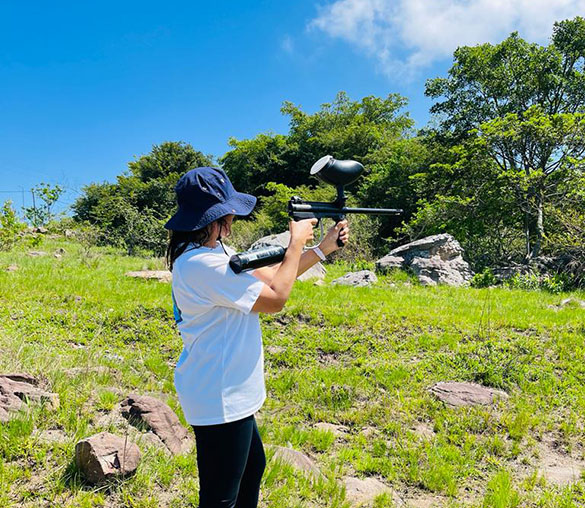Food, Fun & Adventure
Find your adventurous spirit on the South Coast
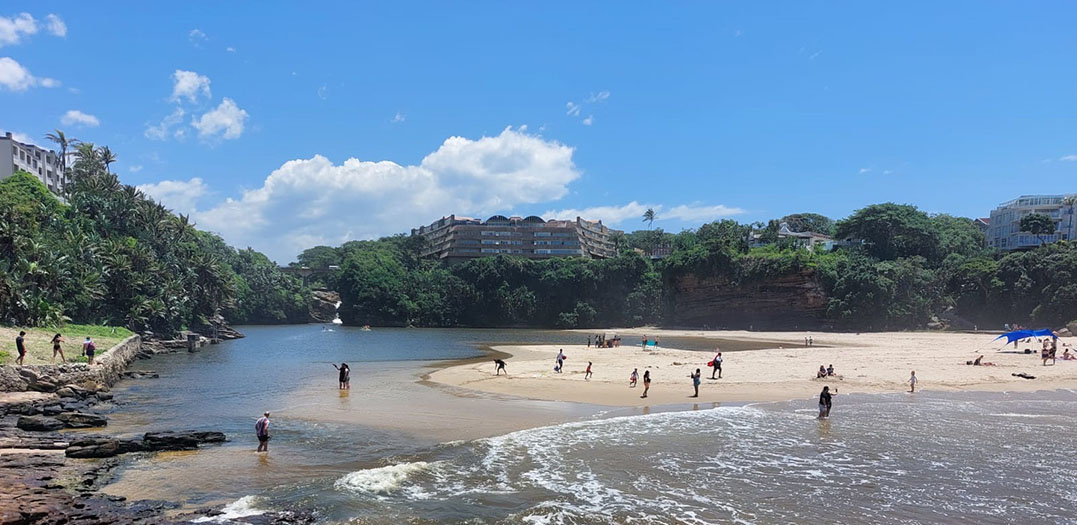
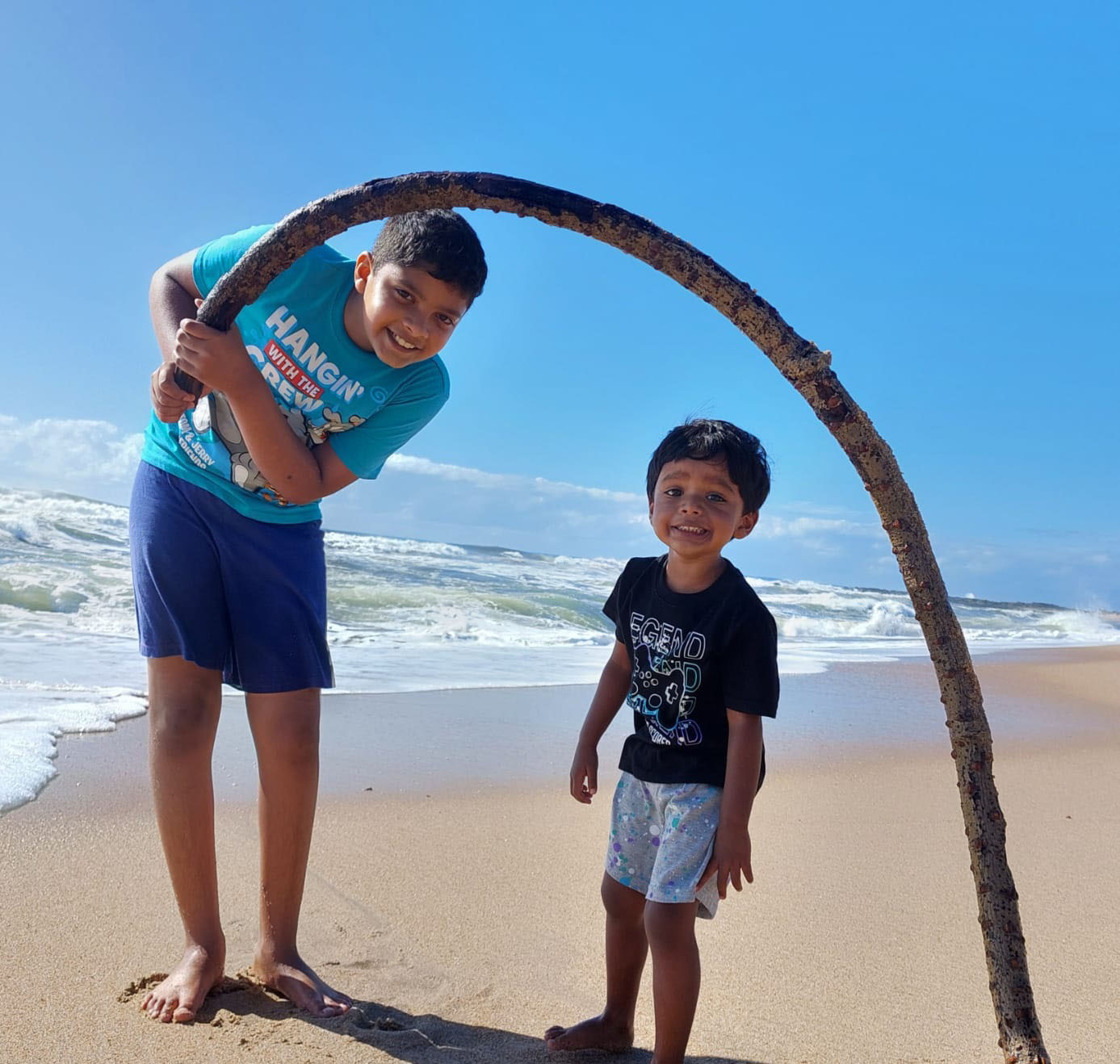
The KZN South Coast stretches 120km from Scottburgh to Port Edward and inland to Harding, and is known as the ‘Paradise of the Zulu Kingdom.
Discover your spirit of adventure among the many cultural experiences, as well as the 35 nature trails and 58 beaches, ideal for activities such as river rafting, abseiling, suspension bridges, paintball, surfing, canoeing, beach horse rides, shark cage diving and free diving.
Nicknamed ‘The Golf Coast’, there are 11 golf courses ranging in difficulty, with endless hiking, mountain biking and 4×4 trails for more rugged excursions.
Promoting sustainability, the KZN South Coast also has a growing agri-tourism sector that offers world-class produce and hosts tours and excursions.
The region boasts several permanently managed Blue Flag beaches and is home to some of the world’s top diving sites, Aliwal Shoal and Protea Banks. The originality continues with the annual Sardine Run, coined the #GreatestShoalonEarth, which is the largest biomass migration on earth and a marvel to witness.
The region’s many nature reserves are inhabited by indigenous bird and wildlife, and it holds the title of ‘smallest desert on earth’, the Red Desert in Port Edward.
The South Coast is a fast-emerging Meetings, Incentives, Conferences and Exhibitions (MICE) destination which also plays host to several high-profile events.
Explore top birding spots
Bird watching is a great way to get back into nature. The KZN South Coast’s natural landscape provides homes for a wide variety of South African bird species.
TC Robertson Nature Reserve (Scottburgh)
This 60-hectare coastal reserve on the south bank of the Mpambanyoni River was established in 1989 and named after the famed author, ecologist and conservationist Dr Thomas Chalmers Robertson. Visitors can view African fish eagles, terrestrial brownbuls, Barratt’s warbler, yellow-throated longclaws and the green malkoha.
Crocworld Conservation Centre (Scottburgh)
More than 200 wild bird species are found at this beautiful conservation centre including nesting palm nut vultures, African fish eagle and six species of kingfishers. Within the centre, there’s a great variety of bird species including the African eagle owl, jackal buzzards, Eurasian eagle owls, Harris hawk and even white mute swans.
Umdoni Park Trust Golf Club and Nature Reserve (Pennington)
Named for the water berry tree found along the estate’s water courses and swamp areas, this is a wonderful place to start a birding adventure. There are extensive trail networks, starting from the clubhouse, which offer visitors the chance to see the spotted ground thrush, purple-crested turaco, olive woodpecker, ashy flycatcher, southern tchagra and narina trogon.
Vernon Crookes Nature Reserve (Umzinto)
Established in 1973, this coastal reserve is just 13km inland of the sea and has beautiful grassland, forest, and wetland habitats. This variety provides shelter for around 300 bird species recorded in the reserve, among them grey crowned cranes, martial eagles, ground hornbills, secretary bird, lazy cisticola, lesser honeyguide and short-tailed pipit.
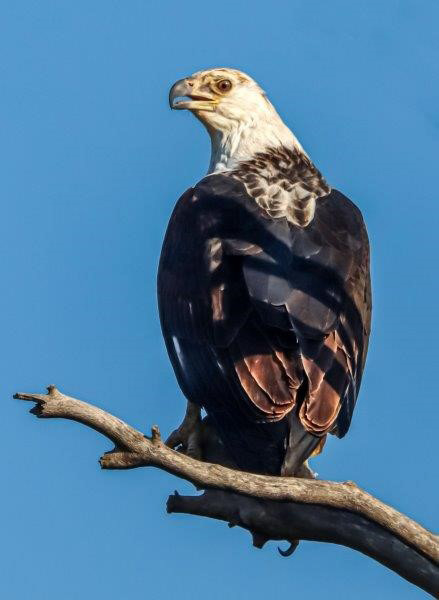
Oribi Gorge Nature Reserve
This is one of the most scenic birding spots on the 24km stretch of gorge along the Mzimkulwana River. More than 350 bird species have been recorded here. Get to the gorge to check out the African broadbill, African finfoot, African wood owl, African pygmy kingfisher and Knysna turaco.
Oribi Vulture Viewing Hide
This site has over 200 resident Cape vultures and is easily accessible by car and foot. Witness a spectacle of vultures soaring along ridges, flying overhead and below, just metres from visitors.
Weza-Ngele Forest (Harding)
Some 80km inland of the coast with a great system of trails to go birdwatching. Visitors can see orange ground thrush, Cape parrot, bush blackcap, chorister robin chat, Cape batis, African dusky flycatcher and double-collared sunbird.
Skyline Nature Reserve (Uvongo)
It is home to a diverse variety of bird species. Birds and other local wildlife can be viewed by hiking along the many trails found here, roughly an hour in length.
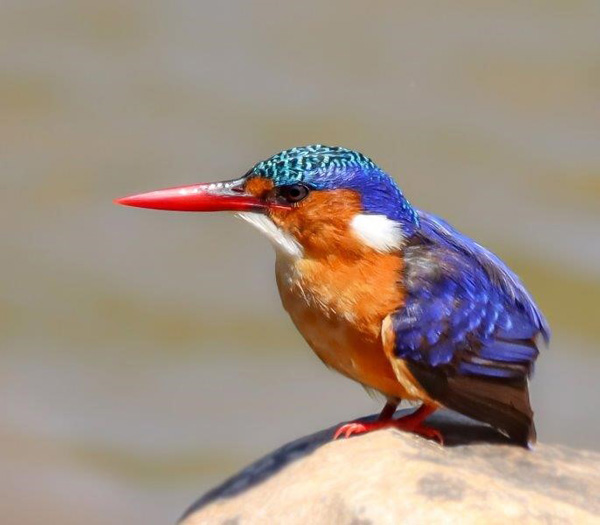
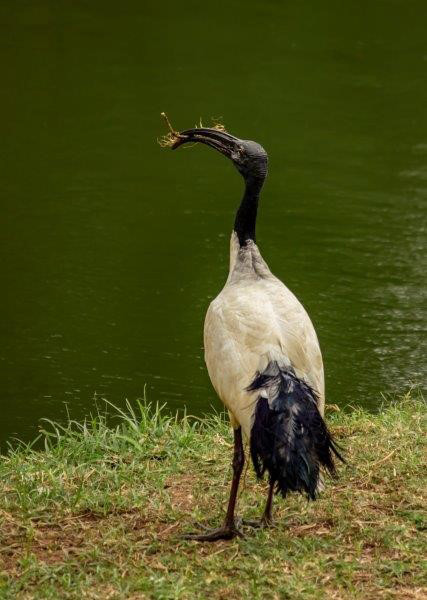
River Valley Nature Reserve (Margate)
This is a much smaller reserve, just 28 hectares in total, with walking trails along the banks of the river into the riverine forest which is home to many interesting birds. In River Valley, twitchers can look out for the green-backed heron, tambourine dove, grey or purple-banded sunbird, grew waxbill and brown scrub robin.
Mpenjati Nature Reserve (Trafalgar)
It is the perfect space for novice or experienced birders to spend a day out. There are walking trails with boardwalk observation platforms to enjoy views of the river lagoon, wetlands, forests, grassland and coastline. Some special sightings could include the half-collared kingfisher, swift tern, African black oystercatcher, Kittlitz’s plover, giant kingfisher and water thick-knee.
Red Desert Nature Reserve (Port Edward)
Combine birdwatching while ticking ‘world’s smallest desert’ off the bucket list. Just 200m in diameter, the desert appears to be a miniature version of America’s Arizona Desert, but it’s the surrounding coastal forest that you’ll find some great birds. There are a range of habitats, including a protected grassland area, with more than 480 plant species and 200 bird species recorded here.
Umtamvuna Nature Reserve (Port Edward)
The southernmost nature reserve includes the beautiful Umtamvuna River, coastal forests, bushveld, cliffs and riverine forests. There are well-developed hiking trails to wander in search of Gurney’s sugarbird, malachite sunbird, pale-crowned cisticola, common cuckoo or rufous-winged cisticola.
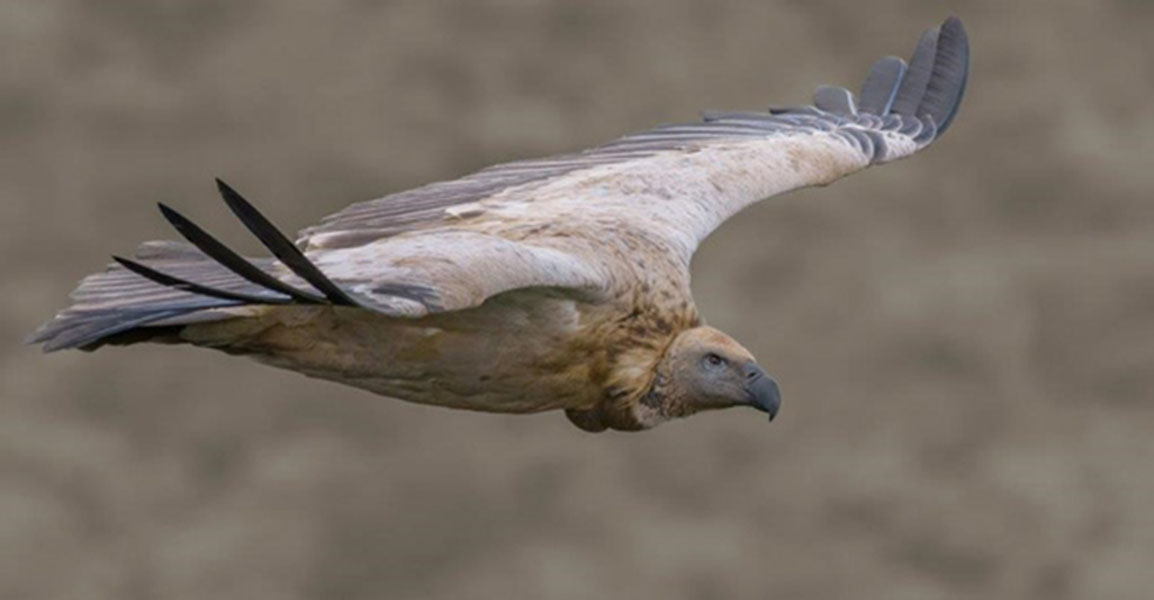
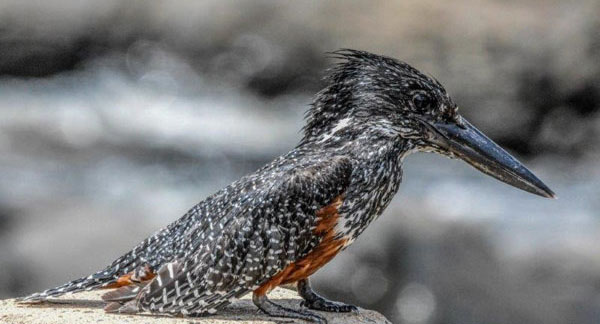
Cast off at the best fishing sites
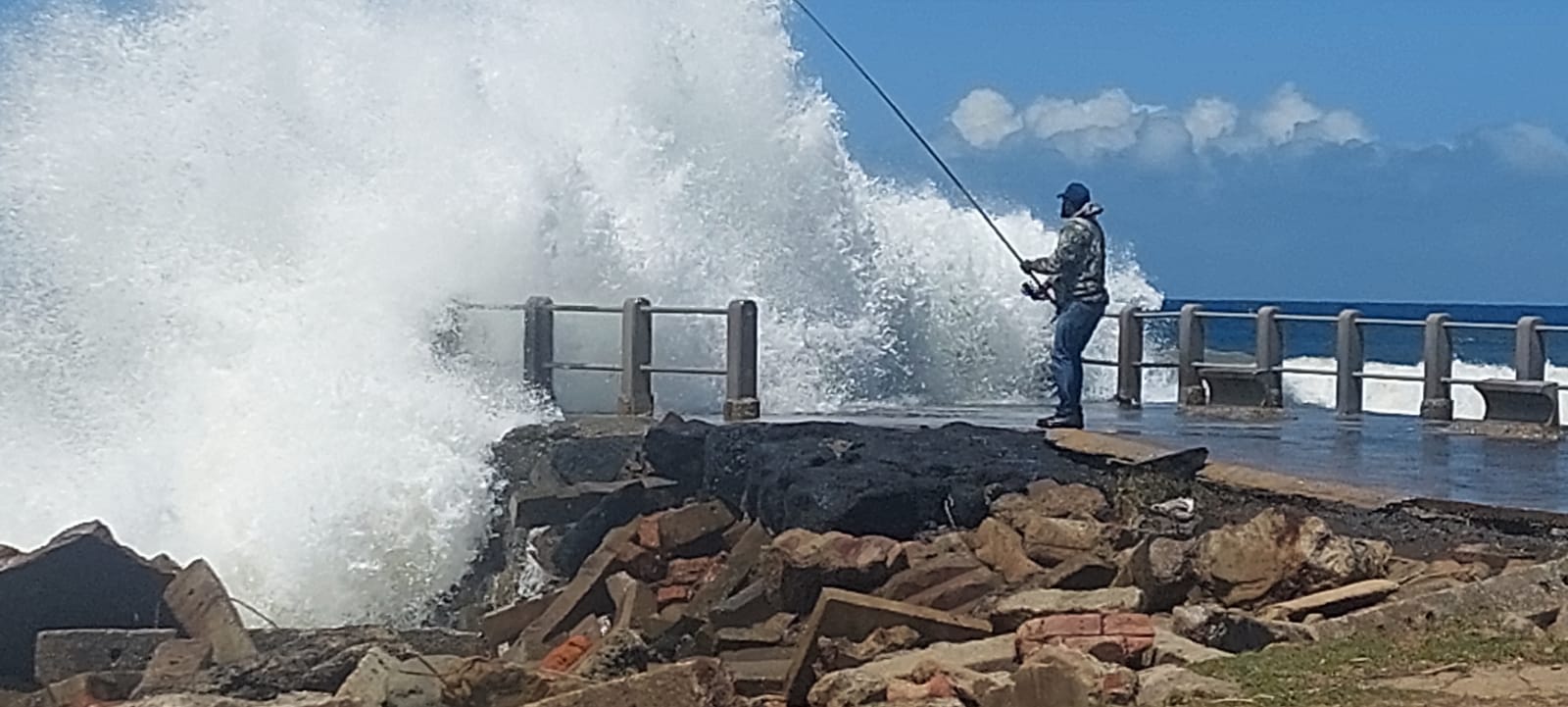
The coastal stretch from Scottburgh to Port Edward boasts a number of incredible fishing spots for every level of angler. The year-round temperate climate and calm waters make fishing a great recreational option in every season.
Rock and surf angling hotspots
Umkomaas River mouth and beach: These are great spots for anglers of any level, and are known for their great kob and shad catches.
Scottburgh point: Those looking to catch sharks, shad and garrick should head to this popular Scottburgh fishing spot. It’s ideal for fisherfolk of all levels.
Rocky Bay: This is a well-known campsite and beautiful spot for reeling in shad and garrick. Fishing here is great for any level.
Umdoni Point and Pennington: If you’re an experienced angler looking for some great fishing, then head on over. These hotspots are known for good queen mackerel, kingfish and shark fishing.
Stiebel Rocks and Pumula: Two more locations for experienced anglers, you stand a good chance of catching sharks, kob, garrick, shad and pompano in these waters.
The Sandspit in Port Shepstone: This spot is known for consistent cob action with shad and garrick also caught here. It’s a good choice for anglers of all capabilities.
Orange Rocks at St Michaels: Another location suited to any angler, expect to catch sharks and gamefish.
Margate Pier: Get there early in the morning to find a spot on this pier, renowned for its shad, kob and garrick and suited to all levels.
Ladder Rock at Glenmore: Experienced anglers looking to catch shark should head to this notable spot.
Splash Rock in Port Edward: This is another great spot for experienced anglers intent on catching shark and gamefish.
Deep sea angling hotspots
Umkomaas: For experienced skippers.
Rocky Bay: An easy launch for all levels of skipper.
Pennington: For experienced skippers.
Shelly Beach: For all levels of skipper.
Port Edward: For all levels of skipper.
Although fishing is great along the South Coast throughout the year, expect to catch different species at different times. For summer fishing, you could land shad, bronze bream, pompano, brusher, stumpnose, stone bream, blacktail, cave bass, sharks or flatfish.
Winter is considered the best time of year for fishing to catch shad, garrick, kob, bronze bream, stumpnose, blacktail and sharks. It’s also an angler’s dream, primarily because of the annual Sardine Run which takes place during the cooler months.
During this time, anglers get the chance to cast baits for massive sharks which swim close to the shore break in search of sardines, as well as gamefish which also feast on the silver fish.
Uncover an authentic township experience
History, culture, and outdoor adventure converge to create the KZN South Coast’s latest tourism offering, the Gamalakhe Township Experience, which was launched recently.
“Gamalakhe is a township with a rich history that includes the sad reality of forced removals, but it also tells the story of the people’s tenacity and the wonderful local traditions that have emerged here,” commented Phelisa Mangcu, CEO of South Coast Tourism & Investment Enterprise (SCTIE).
“It’s important for us to retain this history while expanding our incredible township tourism offerings to benefit our local communities and visitors.”
Gamalakhe Township, located less than 10km from Margate and Shelly Beach, is believed to have started in the 1880s when Norwegian settlers drove local communities from their land. However, it was in the 1950s during the apartheid government’s forced removals that the township grew, as black residents were driven from the coast inland. Gamalakhe Township has developed over the years and is now home to a hospital, police station, schools, a shopping centre, and more!
The Gamalakhe Township Experience will include a visit to Tin Town, the oldest part of the township. Here, Mama Smangele Memela, who was forcibly removed from her home in Port Shepstone town centre in 1968 aged just 12, still resides. She will regale guests on the experience, taking them along her journey into a democratic South Africa.
More than just a lesson in the rich history, visitors will enjoy a ‘Kasified Experience’, an authentic township experience within Gamalakhe. This includes visiting local taverns, car spinning shows, outdoor cinema, quad biking, paintball, and more. Visitors enjoy delicious shisanyama and other local favourites at Sbucie’s Kitchen such as township kotas, burgers, and chips.
For nature enthusiasts, a local guide will take visitors on a hike from Gamalakhe, crossing the Vungu River and hiking along the Mjika River where sightings of local birdlife and scenery are captivating.
Mangcu said Gamalakhe was also being positioned for MICE events such as conferences, sports contests, and festivals: “Ugu Sports and Leisure Centre is at the entrance of the township and it consists of conference and function venues as well as sports facilities. The TVET College which has a Hospitality and Tourism Unit includes rooms to accommodate outside guests and there are also local guest houses with self-catering options. There is a lot of tourism potential being unlocked here!”

South Coast boasts highest number of Blue Flag beaches in KZN
The KZN South Coast has retained its position as having the highest number of Blue Flag beaches in the province.
“We are delighted that the KZN South Coast has, once again, shown it’s a premier seaside destination that takes environmental conservation and bather safety seriously,” commented Phelisa Mangcu, CEO of South Coast Tourism & Investment Enterprise (SCTIE).
“With tourism the lifeblood of our local economy, this will continue to position the KZN South Coast as a top coastal destination, supporting local job creation and ensuring the region’s economic viability. We welcome this announcement, particularly ahead of our busiest time, the festive season!”
In addition to retaining its title, two KZN South Coast beaches have been noted for their longevity in the programme which started in 2001. Marina beach has retained Blue Flag status since the programme’s inception – 22 consecutive years – and Trafalgar beach for 12 consecutive years. The KZN South Coast also has 7 beaches in the Blue Flag Pilot programme, indicating continued commitment to conservation, health, and safety.
The KZN South Coast Blue Flag beaches 2023/2024 in Ray Nkonyeni Municipality are: Marina beach, Trafalgar beach, Southport beach, Umzumbe beach and Hibberdene beach.
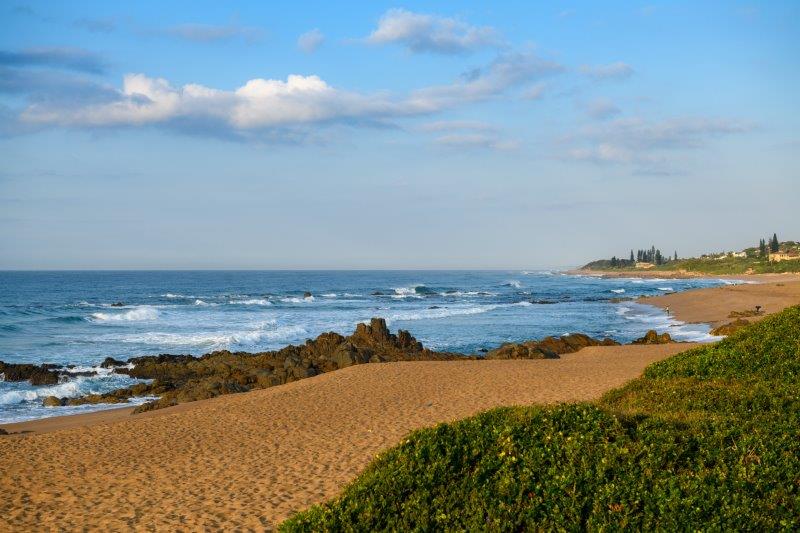
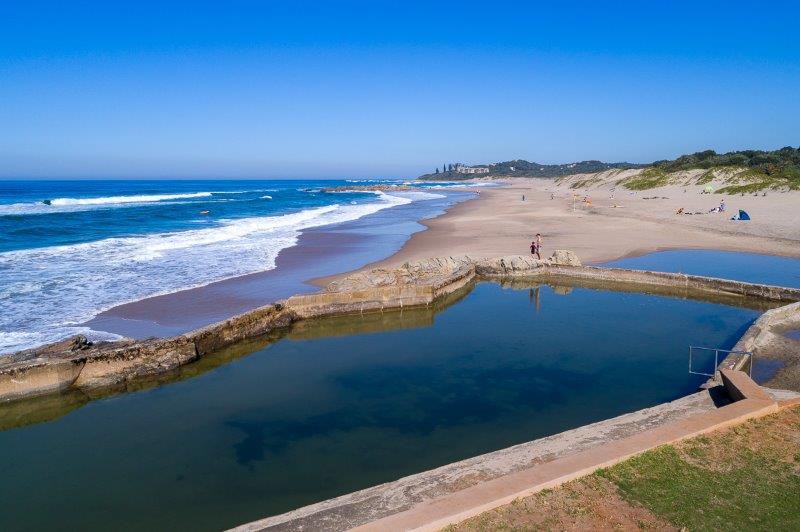
The KZN South Coast Blue Flag Pilot beaches 2023/2024 are:
Umdoni Municipality: Pennington beach, Rocky Bay beach, Preston beach, Umthwalume beach and Scottburgh beach.
Ray Nkonyeni Municipality: St Michaels beach and Ramsgate beach.
Beaches that have achieved the international certification of Blue Flag have adhered to the Foundation for Environmental Education’s (FEE) standards of environmental management. These standards relate to water quality, safety, and public environmental education. All properties and companies that apply for the Blue Flag award are assessed by a South African National Jury as well as by the Blue Flag International Jury in Europe.
In South Africa, Wessa (The Wildlife and Environmental Society of South Africa), has been locally managing this globally recognised eco-label in partnership with FEE since 2001. According to Wessa, the Blue Flag is a voluntary programme which shows a very strong commitment to environmental sustainability from municipalities that are awarded.
WESSA CEO, Helena Atkinson acknowledged the exceptional efforts made by local authorities, communities and volunteers in achieving excellent world-class standards this season: “It takes great dedication and effort to manage a beach or marina to meet the rigorous standards set out for this prestigious award, and we extend our warmest congratulations to all the deserving sites that have achieved the eco-labels.”
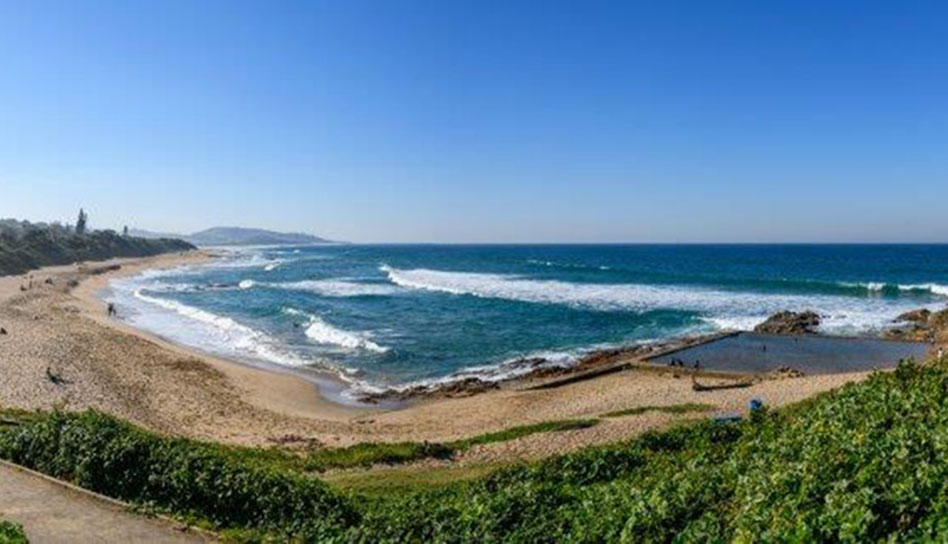
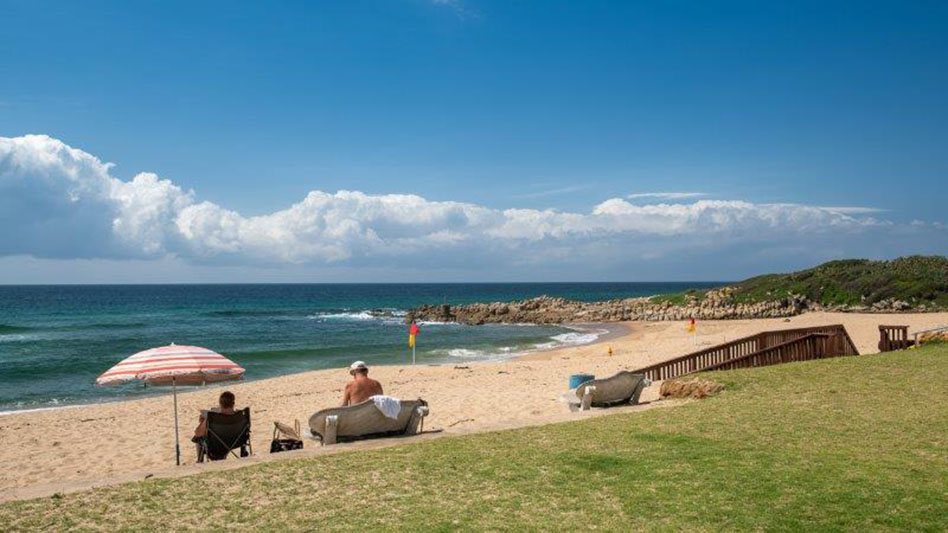
Embark on a hinterland adventure - the Nyandezulu Experience
Visitors coming to the KZN South Coast for the Blue Flag Beaches, world-class dive sites, and Sardine Run spectacle will now have the chance to embark on another epic adventure; the Nyandezulu Experience. This newly launched tour package includes a guided tour of this breath-taking rural area, with hikes to scenic viewpoints and the iconic Nyandezulu Waterfall.
South Coast Tourism and Investment Enterprise (SCTIE) recently hosted a number of local media representatives on a Fam Trip, affording them the opportunity to experience another side of the KZN South Coast. This forms part of SCTIE’s ongoing drive to include rural communities and businesses in the mainstream tourism economy, while enhancing the tourism experience for visitors.
“The Paradise of the Zulu Kingdom truly has a wealth of natural beauty, from our incredible coastline to our mountains, valleys, gorges, waterfalls, and lagoons,” commented Phelisa Mangcu, CEO of SCTIE. “By developing and highlighting these tours and packages, we’re extending the tourism sector into the beautiful hinterland region and meeting the demand of modern tourists – which is unique experiences in nature.”
Nyandezulu is a rural area located just 9km inland of Shelly Beach, boasting some of the most idyllic scenery from high above the Indian Ocean. Nyandezulu Experience is a day-long tour departing from Port Shepstone and starting with some traditional African cuisine at Zethu Mthiyane Homestay. Visitors then embark on a hike to the top of Ntantana Mountain where they enjoy a 360-degree view of lush vegetation, the Indian Ocean, and the cascading Nyandezulu Waterfall.
Visitors will then head up to the cliff of the 80m Nyandezulu Waterfall where they can enjoy more views while sighting local birdlife. From here it’s a cool descent through the coastal forest to the bottom of the waterfall where hikers can take a dip in the plunge pool created by the waterfall. Finally, there’s a riverside picnic before heading back home.
Deseré Bouillon, a tour guide from Exploring South Coast commented: “Nyandezulu is the most amazing yet challenging experience, and it’s almost in our backyard. We just love to show it to visitors and locals on our tours!”
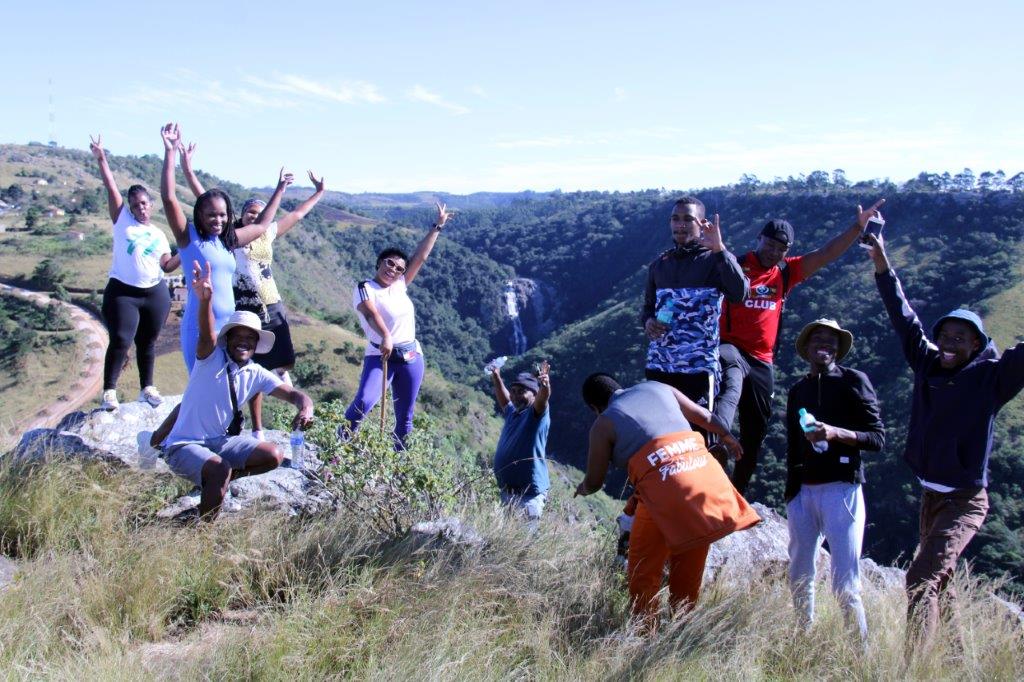
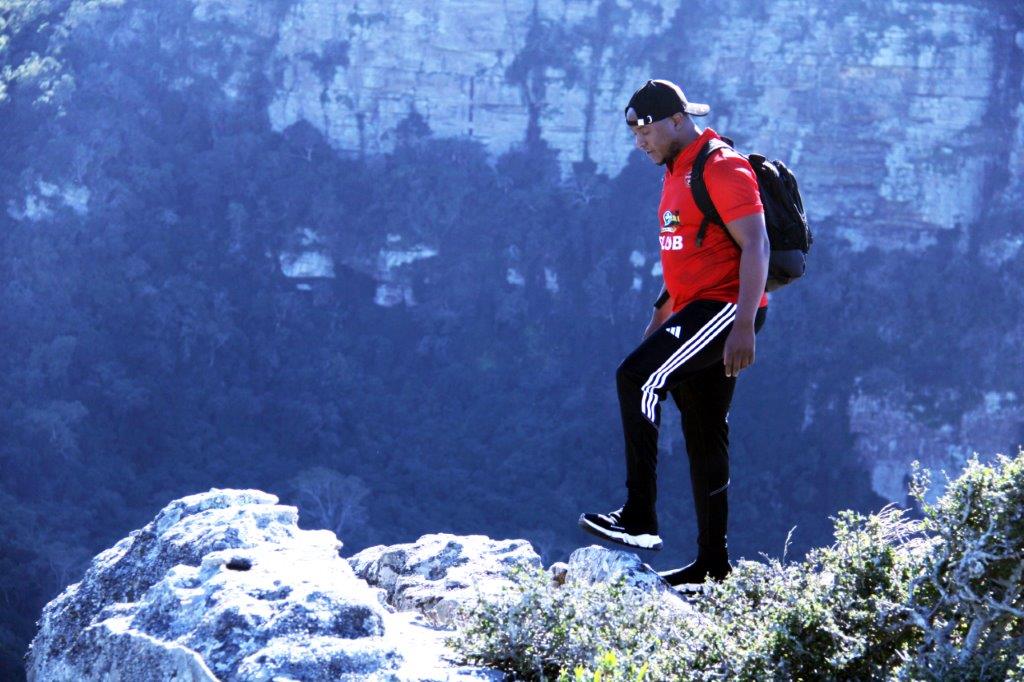
Go back in time on a KwaXolo Caves adventure
The KwaXolo Caves are located 25km inland from KwaNzimakwe along the KZN South Coast and are a must-see on your next vacation.
The caves are estimated to be around 100 000 years old! They were open-rock shelters to the indigenous San communities and showcase a large display of San rock art paintings. The caves are located on top of a precipice that looks down on the gorge below and boasts magnificent views!
The caves have a unique viewing experience, visitors view the caves through a ferrata system, a climbing route that uses steel cables and rungs that are fixed to the rocks. Visitors are fastened into safety gear that allows them to be securely hooked to the cables.
Experienced tour guides instruct on how to move along the safety lines and admire the caves in a truly adventurous tour! While strapped in and safe, visitors can also admire the views of a breath-taking waterfall and gorge! This experience can be described as extreme sports tourism, with natural and cultural elements thrown in.
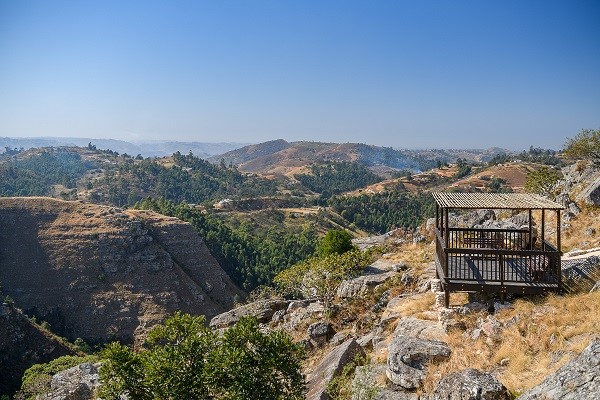
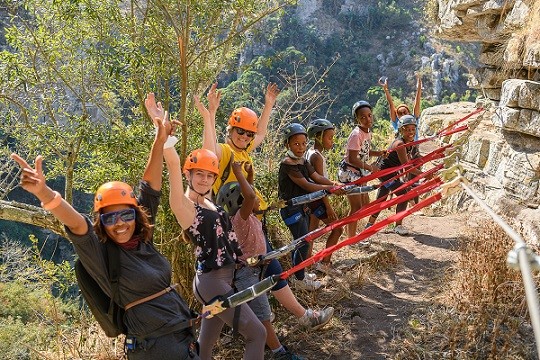
The cables system ends once visitors reach the opening of the KwaXolo Caves and their feet touch level ground again! Once inside the caves, visitors are taken on a journey back in time as the San rock paintings tell the stories of a past civilisation.
The paintings are said to represent the journeys of shamans (medicine men) and their communications with the spirit world. San rock paintings are some of the oldest art forms, not only in KZN, but most of South Africa, they are incredibly significant in understanding the San people and how they must have lived all those hundreds of thousands of years ago.
The area surrounding the caves is popular with the communities in the area, most of which contribute to the tourism industry in the vicinity, with their contributions to community workshops and initiatives that are all funded by a portion of the KwaXolo Caves’ earnings.
The caves are an adventurous activity that is perfect for a day out with family and friends! Travellers from the age of eight years old and above are eligible for the hiking adventure. Experience history like never before, hike where the San might have hiked, and feel yourself go back in time!
Enjoy bird watching along Weza Hiking Trail
South Africa is renowned for its scenic hiking trails that give visitors the chance to discover the natural beauty of a region while immersing themselves in the cultural wonders as well.
The 8km Weza Hiking Trail starts in the iKhwezi rural area, about 10km from the farming town of Harding. A trained local guide will take visitors from the junction of the Mawane and Weza rivers, the latter being a northern tributary of the mighty uMtamvuna River.
Visitors will traverse two amaKhosi areas, KwaMachi and KwaJali in Umuziwabantu, finishing at a real hidden gem, the Mkhoba Waterfall.
Hikers will enjoy some unique bird watching and wildlife spotting while crossing through indigenous forests and over rivers to incredible viewpoints. Most of the area is covered with a green carpet of grass known as the Aristida junciformis, which in Zulu is known as Ingongoni. This scenic walk will be enhanced by stories shared by the local guide.
For those who would like to extend their stay, there is comfortable accommodation at Ntozakhe homestay. Guests will learn more about the mixture of two local cultures, Zulu and Xhosa, while enjoying traditional meals and braais either at the homestay or a picnic spot overlooking the Weza River.

Beach tips for the holidays
1. Blue Flag
If there is an option, Blue Flag Beaches are best as they meet international standards for accessibility, facilities and amenities, safety (lifeguards), cleanliness and responsibility towards the environment.
2. Lifeguards
Only ever swim at beaches where and when lifeguards are on duty to keep safe. Always listen to their advice and follow their guidance on where and when to swim. They are the experts.
3. Avoid inflatables
Tubes and inflatables shouldn’t be used at the beach as they can be blown away from shore very easily and do not act as a swimming safety device. Rather save these for use in the pool.
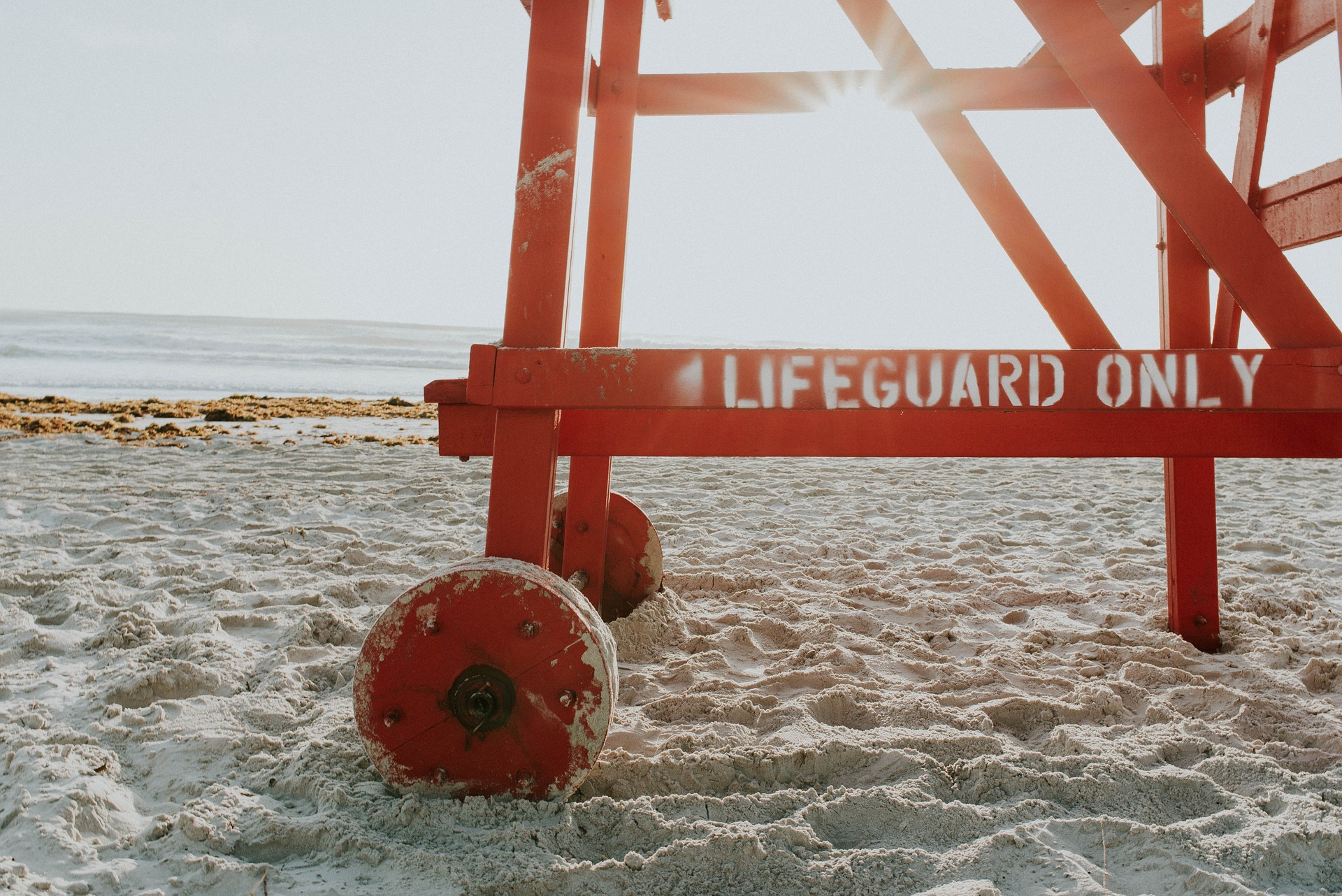
7. Check the tides
Plan your beach day around the tides, with low tide the best time to go for younger ones. Keep an eye on the tide and monitor as it’s coming in.
8. Take a buddy
When going to the beach, never swim alone. Take a friend with you so that there is someone to call for help if needed.
9. Go prepared
When heading out for a day at the beach, remember to take everything you’re going to need. This includes lots of water for rehydration, sunscreen, snacks and some form of shade such as an umbrella. Keep valuables hidden away from sight.
10. Choose your accommodation
For the ultimate seaside holiday, try to find accommodation that is close to the beach. Whether you’re camping or in a holiday cabin, being close to the beach means you will really be getting the most out of your summer holiday fun.
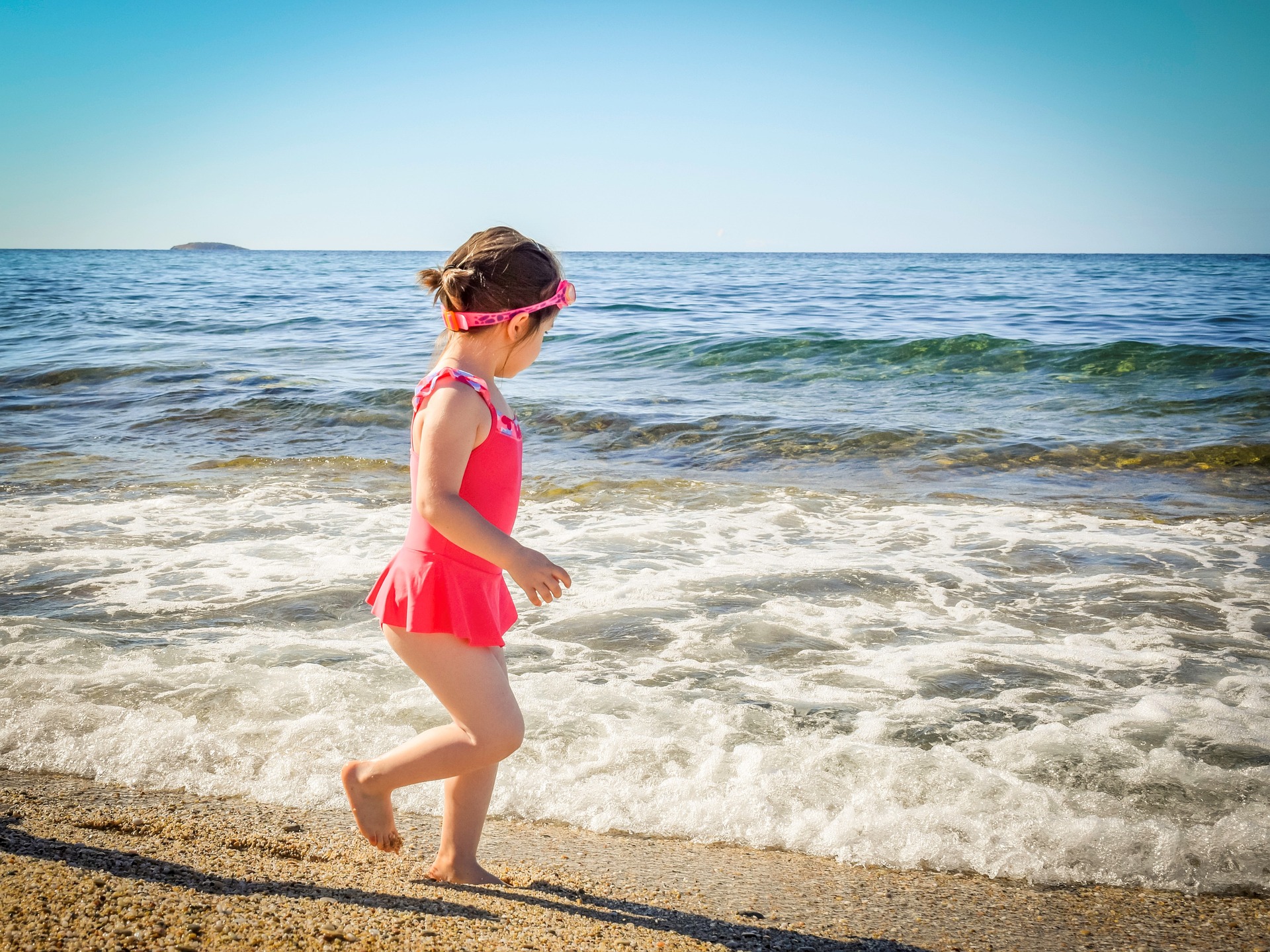
4. Supervise children
Children must always be supervised at the beach, even if they’re just in the shallows or rock pools. Do not get distracted by a book or cellphone, as accidents can happen very quickly.
5. Rip currents
When caught in a rip current, it’s important to stay calm as it will not pull you underwater, but rather away from shore. Swim out of the rip current, parallel to the shore, and follow the breaking waves back to the shore at an angle. If in trouble, wave a hand so the lifeguards are aware.
6. Face the ocean
Never turn your back on the ocean, particularly when climbing on or fishing from rocks. It’s best to wear a life jacket in these instances, particularly in spring high tide.
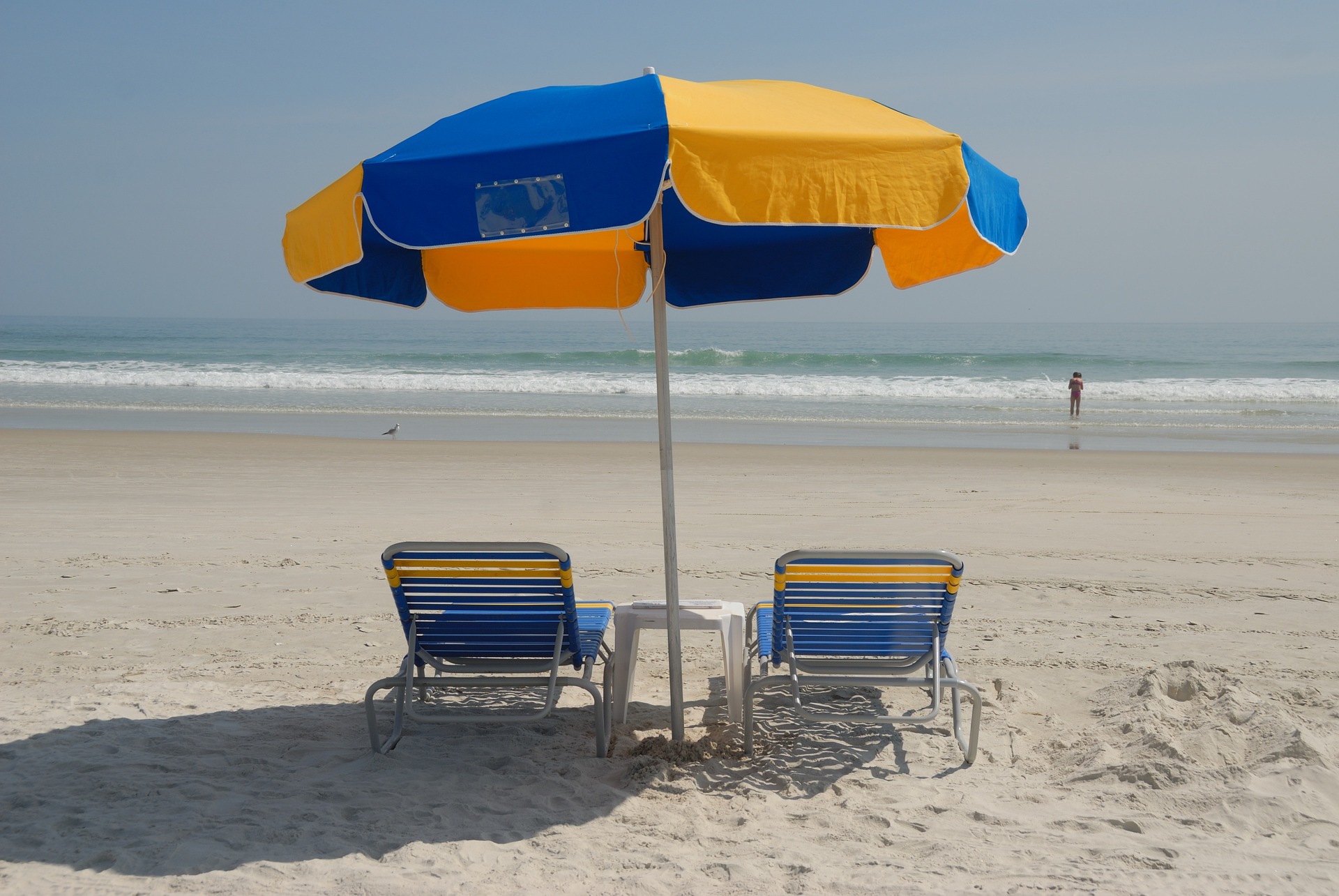
The World’s Smallest Desert
In Port Edward near the Wild Coast, visitors will find a number of exciting tourism offerings. One of these is the Red Desert Nature Reserve which – at only 200-metres in diameter – is the world’s smallest desert. The beautiful red soil of this archaeologically significant site contrasts against the green coastal forests and sparkling blue Indian Ocean!
It lies some 10 kilometres west of the town and is 11 hectares in its entirety. Best described as a miniature version of the Arizona Desert, the many high hills and valleys of naked red soil bare stark contrast to the surrounding lush and tropical vegetation. Archeological artefacts going back millions of years can be found and this is now an internationally protected heritage site.
This peculiar phenomenon is surrounded by myth and legend including stories that this is the site of an alien landing. Truth be told the origins of this desert are found in the location of a Zulu tribe in the 1800s, with vast cattle herds stolen from the Pondos.
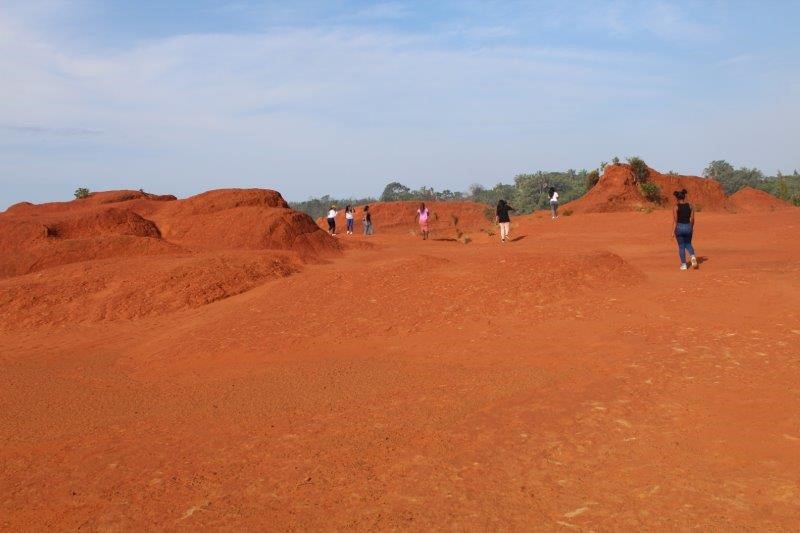
The terrain became severely overgrazed and subsequently eroded by wind leading to the desertification and an opportunity to study the unique desert ecology. Hit the trail on foot or mountain bike and check out the magnificent view over the Umtamvuna Estuary from the cliff top.

Mzamba Fossils and Petrified Forest
The incredible Petrified Forest has great hikes among the trees which were actually washed down river and deposited in the area millions of years ago. Visitors can enjoy a guided tour of this ancient forest, which includes viewing the Mzamba fossils – a series of marine fossil beds exposed along the prominent reefs near the Mzamba River.
When you think petrified forest, you may expect to see a forest in the traditional sense, but you would be wrong. The forest does not stand tall next to you but rather underneath – as you walk, you will see 80-million-year-old fossilised trees and deposits on the rocks. The site was discovered in 1824 by Pioneer HF Fynn and brought to the notice of the scientific world by Captain JR Garden in 1855.
Kick off your shoes and walk along the rocks and discover the tree and log formations, as well as beautiful examples of tightly coiled ammonites, echinoids (sea urchins) and bivalve shells, with the magnificent Indian Ocean on one side and a 10-metre cliff on the other.
The cliff also consists of fossil material, and you follow it along the coast until you get to a series of caves, known as the “White Man’s Caves” – named after shipwrecked Portuguese sailors who sheltered in them during the 1800s.
Tips: Apply sunscreen· Wear slops, as you walk through water and would need to carry your shoes· Pack lightly if you pack anything at all – you only need water if a hot day.
Umzumbe River Trail - a unique hinterland tourism experience
“Hiking trails are the best way to experience South Africa’s scenery, sunny climate and outdoor culture – it’s one of the world’s most popular hiking destinations. Whether you like to hike up mountains, along rivers or through valleys, you’re certain to find a perfect route.” – South African Tourism Board
The development of tourism routes in the hinterland is a key role of Ugu South Coast Tourism (USCT), bringing unique experiences to visitors while creating valuable job opportunities for local communities. The launch of the Umzumbe River recently is the latest hinterland initiative that takes visitors into the heart of the South Coast for an authentic Zulu experience.
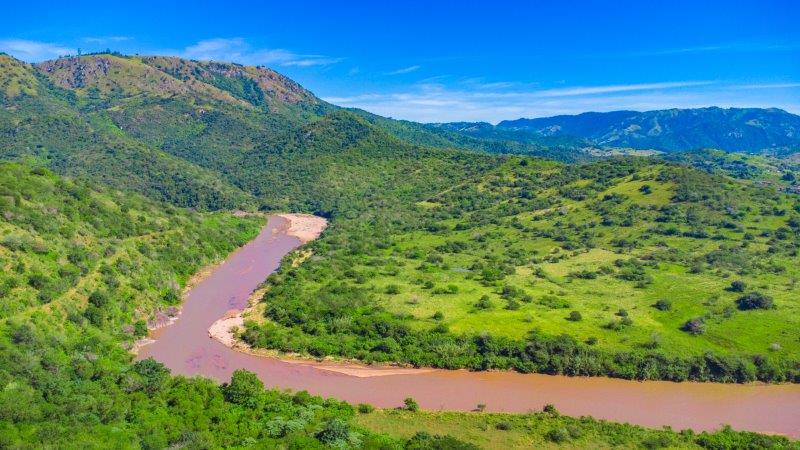
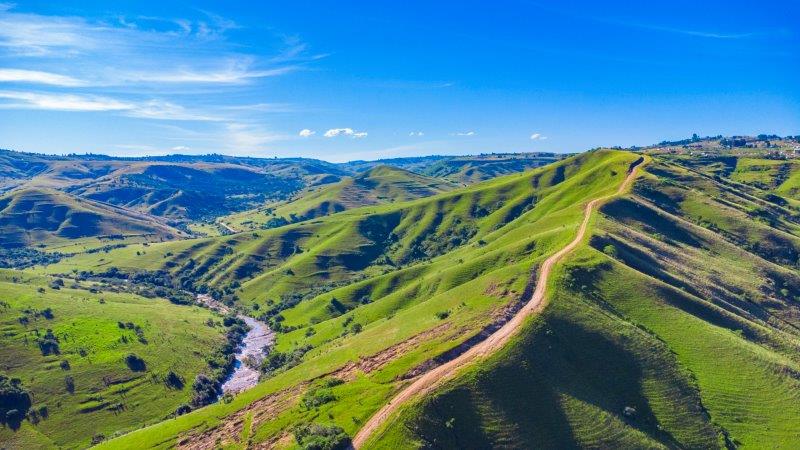
Those embarking on the Umzumbe River Trail will be given a traditional welcome at the start at Mhlabatshane Dam in Phugashe before a week-long hiking adventure that winds along 70km of spectacular natural landscape. Knowledgeable local trail guides will lead guests, either hiking or biking, while sharing information on the unique geology, flora and fauna of the region as well as the many medicinal uses of plants that have formed part of Zulu culture for centuries.
“There are more than 1 000 registered hiking trails across South Africa’s nine provinces offering visitors an incredibly immersive experience,” explained Phelisa Mangcu, CEO of USCT. “Drawing on this popularity, we considered a dedicated KZN South Coast hiking trail the perfect way to provide visitors with an unmatched hinterland excursion that brings in natural and cultural enlightenment along the way. In this way, we’re creating a sustainable rural tourism product that further entrenches the Paradise of the Zulu Kingdom as a prime holiday destination.”
This trail winds across a landscape that is home to six Zulu clans; the eNhlangwini, eMabheleni, KwaCele, kwaNdelu, kwaQwabe and KwaMadlala. Guides will take hikers on detours along the trail to places of interest and privately owned refreshment stops. Every night, visitors will be welcomed into authentic homestays where they get to experience the traditional culture of each of these clans.
Drumming, song, dance and storytelling will give insights into a history stretching back to the days of iNkosi uShaka and beyond. Guests will also enjoy the opportunity to venture out and experience the taverns, sights and sounds of nearby villages. The world-renowned skill of local artisans will be showcased through handmade arts and crafts on display.
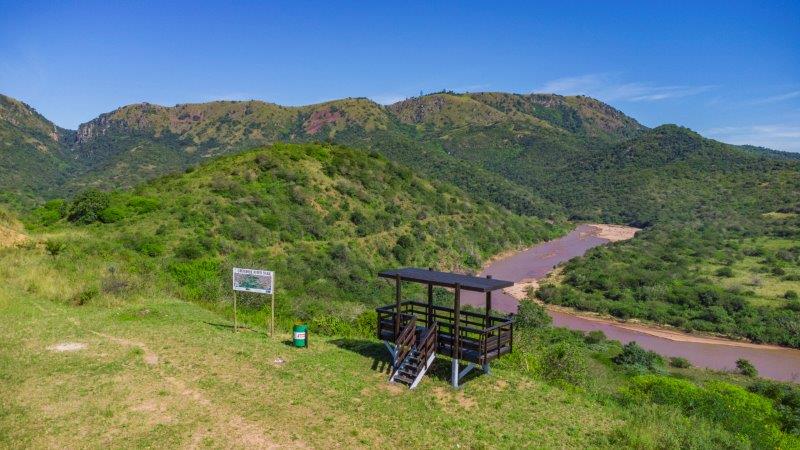
Great reasons to go camping on the South Coast
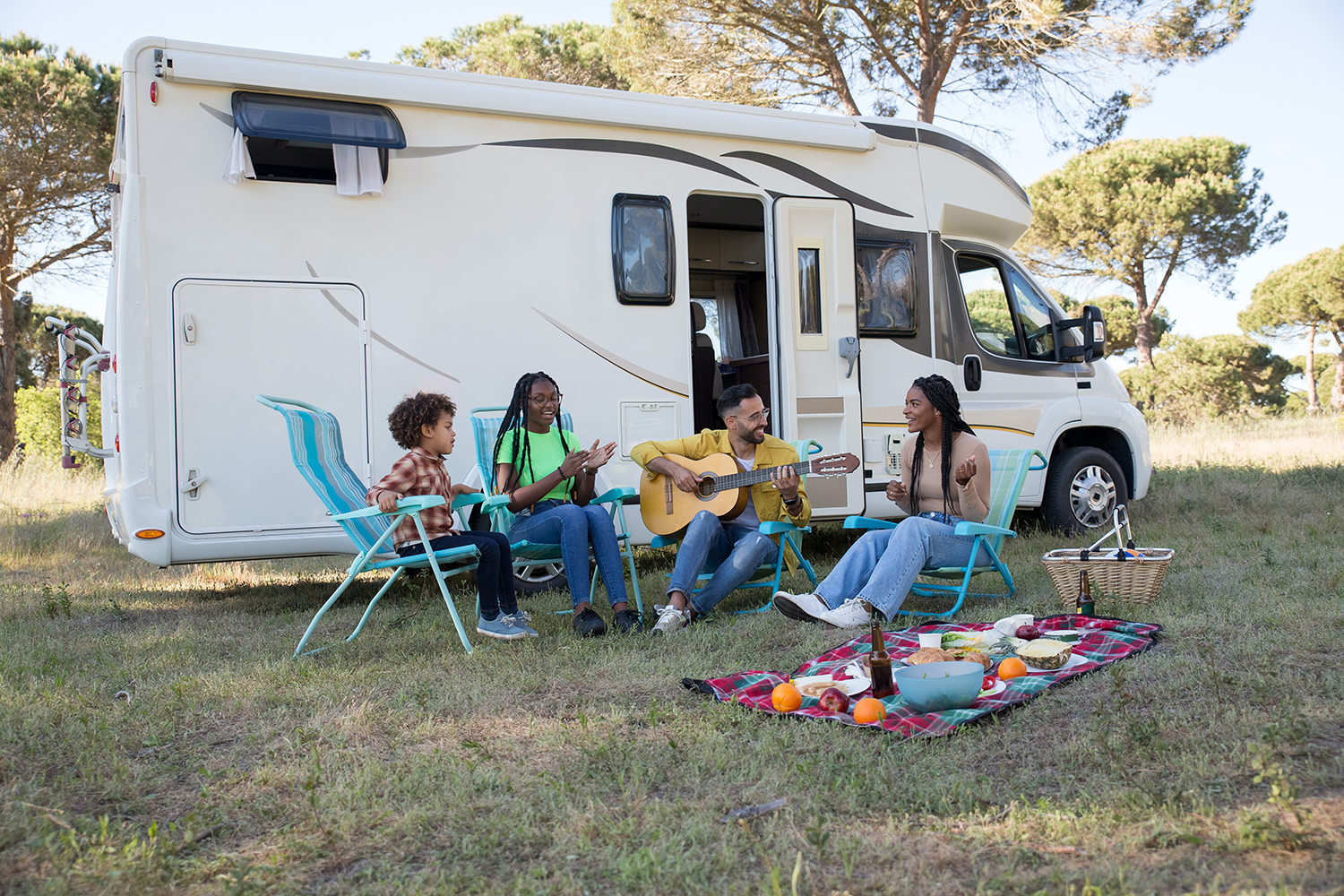
With the chill now in the air, it’s time shake off winter blues and #GoSouthKZN where visitors can enjoy the coastal paradise with its clear skies and sunny weather – no matter the season. But to experience the #ParadiseoftheZuluKingdom in a truly unique way, it’s well worth booking a camping trip at the seaside.
For those who haven’t yet braved the outdoors, here are 5 reasons to #GoSouthKZN for a camping trip:
It’s budget-friendly
With the struggling economy, many are looking to make the rands and cents go further, which is where camping is a great option. Camping equipment can be borrowed or rented, and the cost of hiring a camping spot is substantially less than booking into any other venues. With the #KZNSouthCoast also encouraging visitors to #ExtendYourStay, there are many venues offering great discounts and special offers.
Connect with nature
Campfires under the stars, days spent exploring the rock pools and learning to surf…there’s something invigorating about time spent completely outdoors. Modern life means very few children actually get the chance to experience nature in such close proximity, so they’ll truly relish this unique experience. The #KZNSouthCoast in winter also gives visitors the chance to witness the #SardineRun and whale migrations, truly unique sightings of ocean activity. And, with several Blue Flag beaches, two internationally-renowned dive sites, and the most tidal pools in the province, there’s lots to be explored on the coast!
Break from technology
While modern campsites do provide the option of charging electronics where needed, this is a great opportunity to disconnect from the devices and re-wire the mind through natural experiences. This provides families with a chance to actually get to know each other and create new memories.
Make lasting connections
Although campsites do provide a space for privacy, there’s a strong sense of community throughout the site, with youngsters meeting new people from all over, and making connections that can last a lifetime. After so much time spent in isolation, now is the time to re-connect with others and form new friendships.
A sense of appreciation
Spending time in the great outdoors, living a minimalist life, gives perspective on how little one needs and encourages appreciation for the little things. Sleeping in a tent, watching the sunrise over the ocean and roasting marshmallows over an open fire are all a great way to improve wellbeing, create a sense of calm and relaxation.








